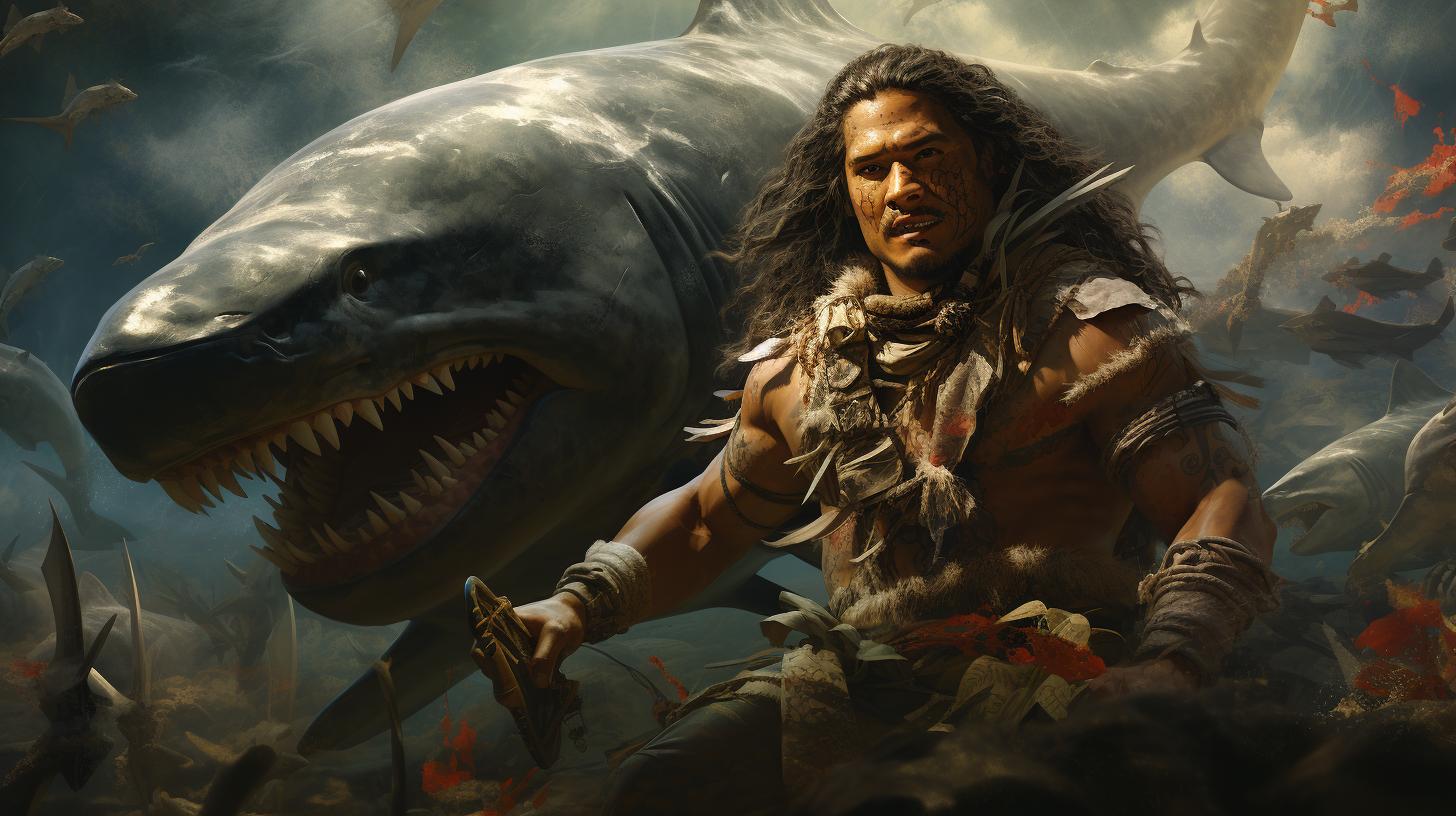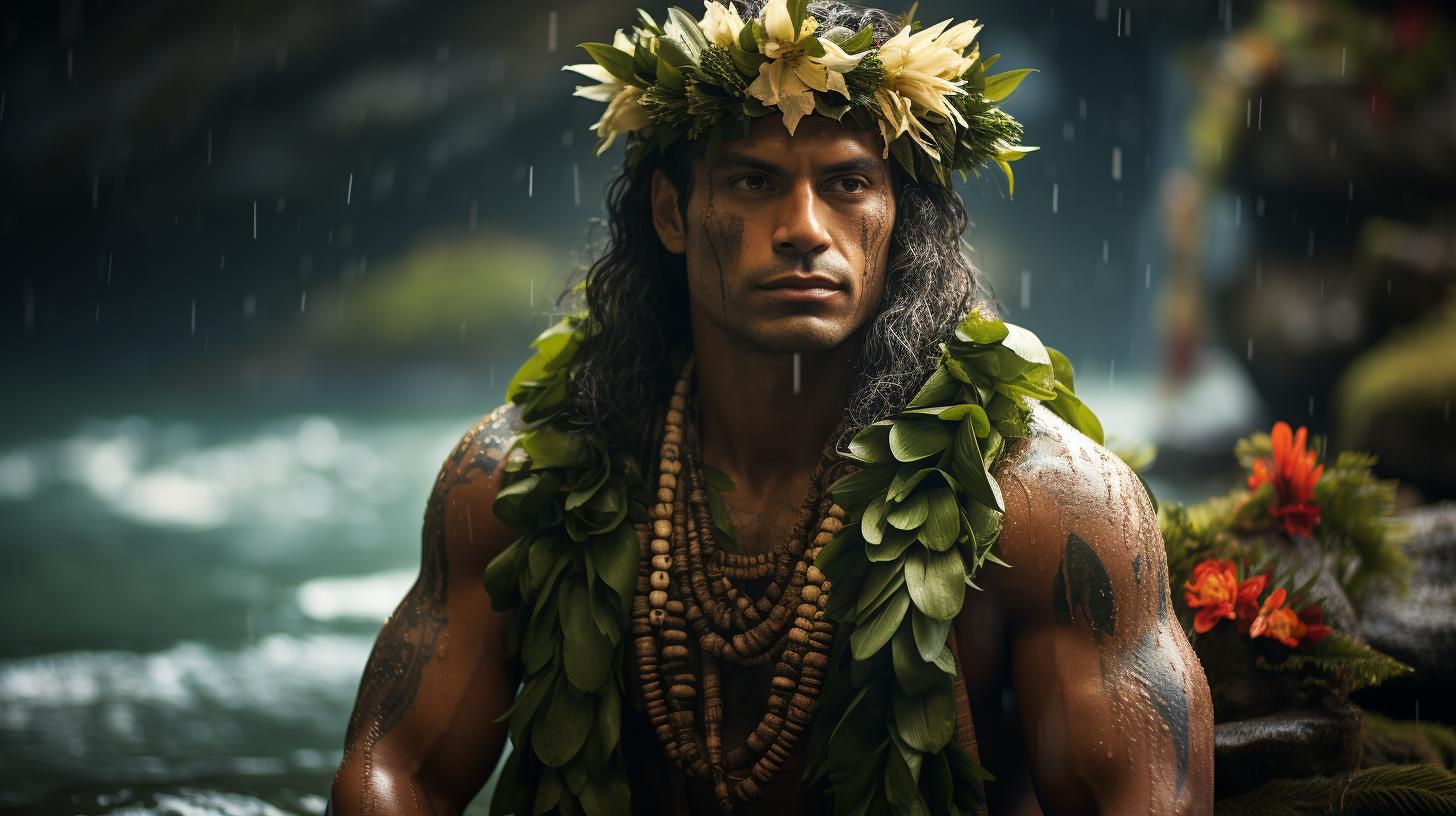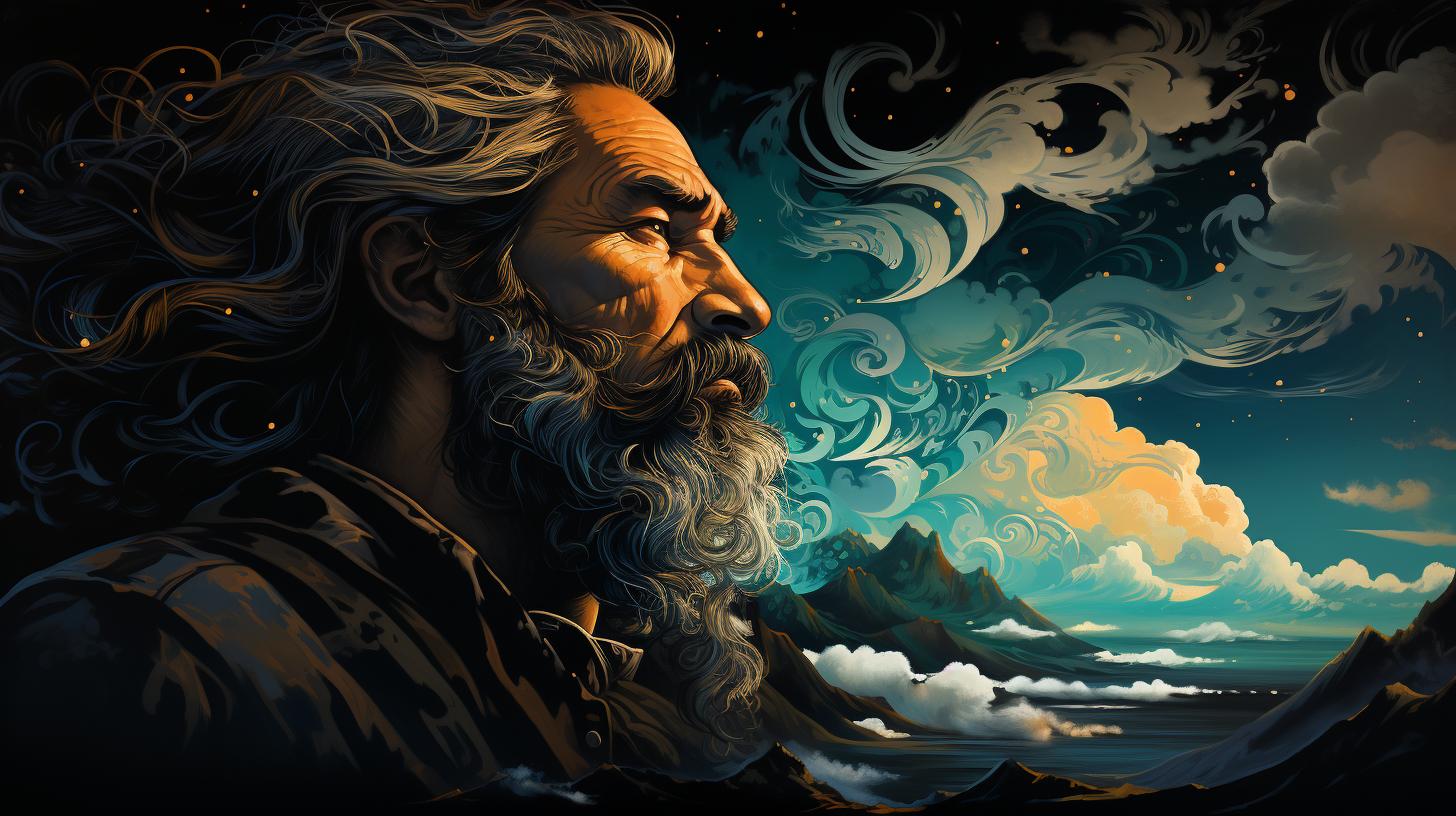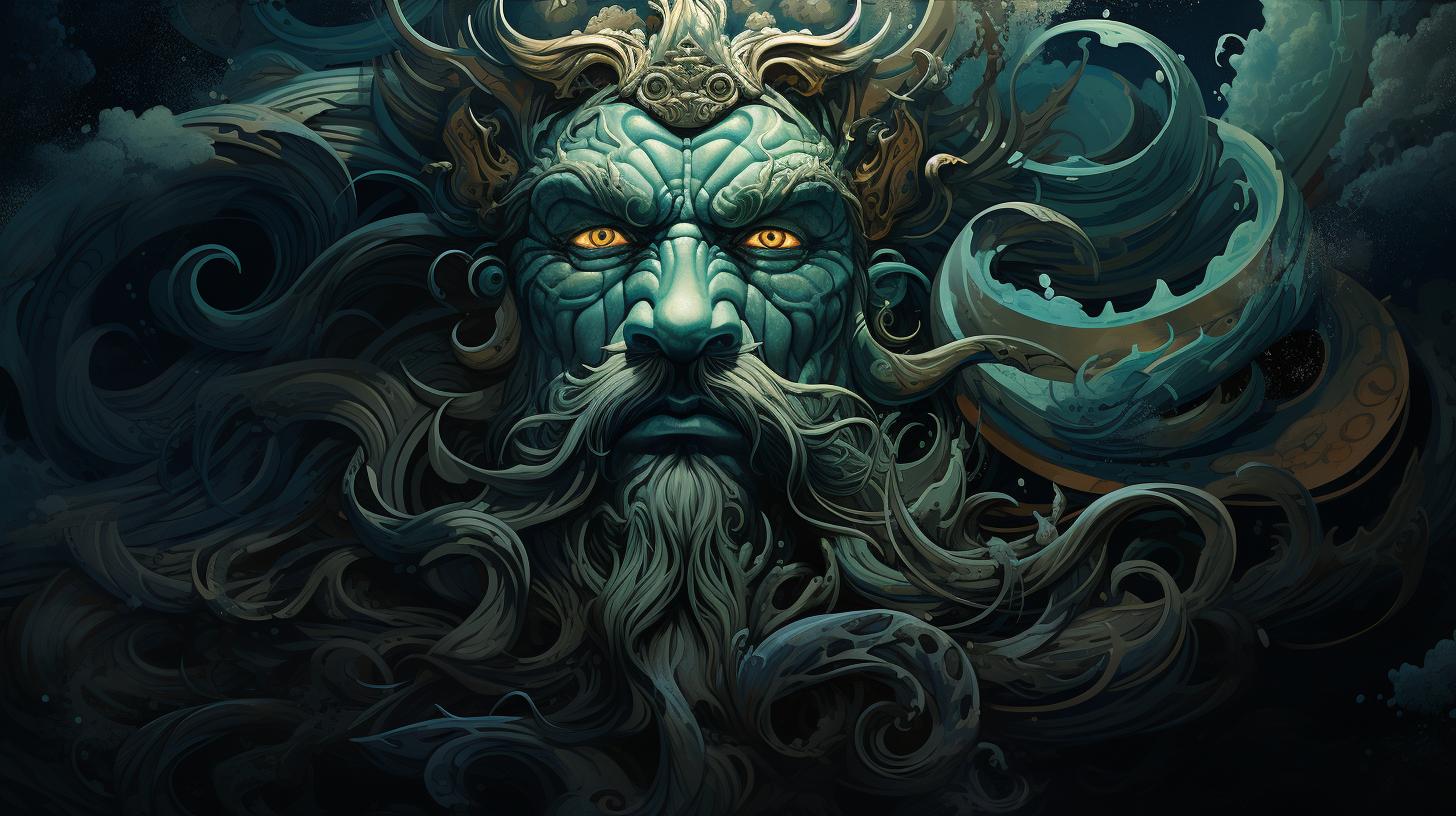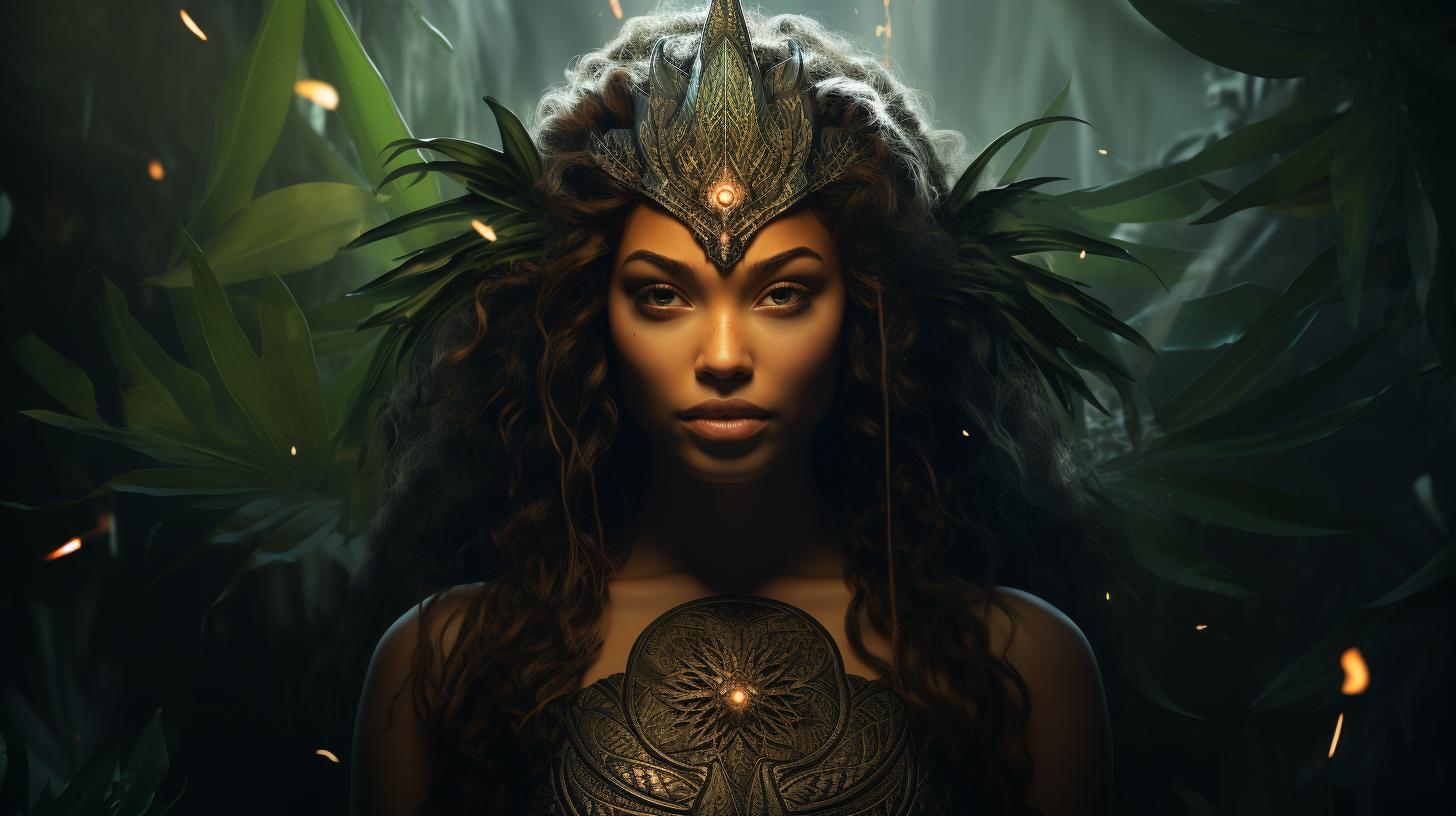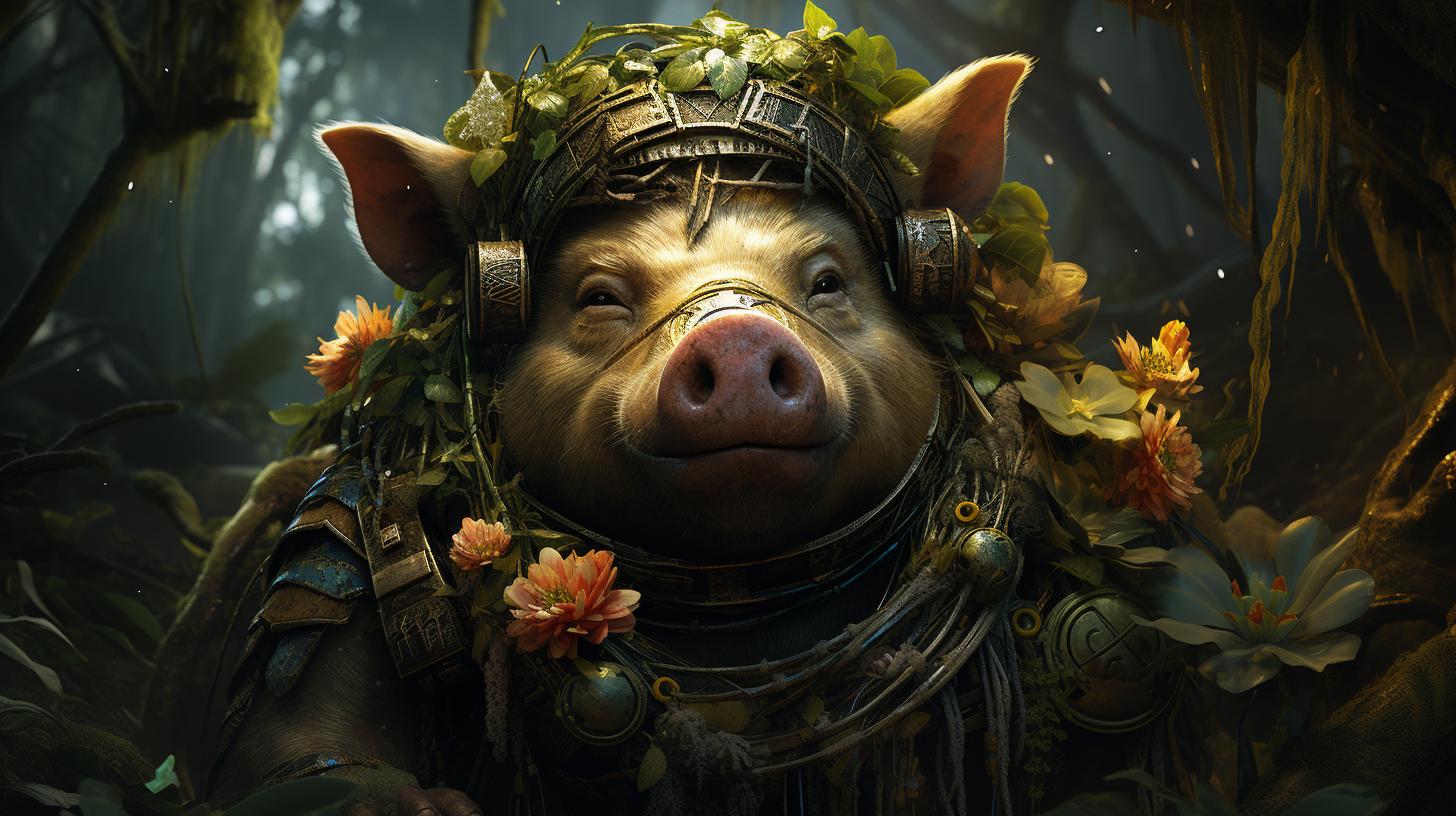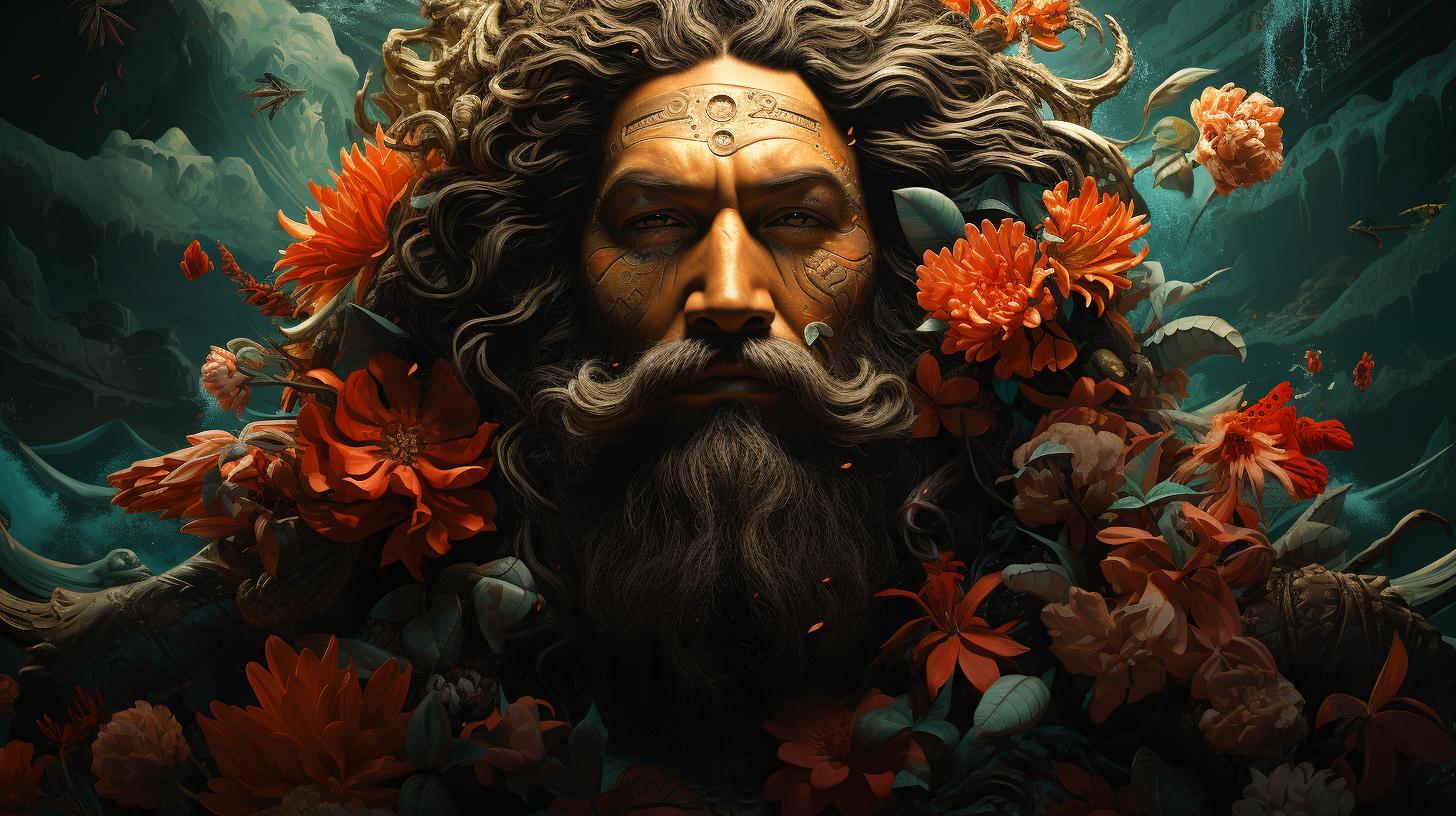‘Hawaiian Shark God Kamohoalii: Exploring the Mythology and Cultural Significance’

Hawaiian shark god Kamohoalii holds a prominent place in Hawaiian mythology. As the chief deity among the shark gods, Kamohoalii is revered for his role in guiding lost ships to safety and protecting sailors.
His connections to the ocean and his ability to transform into various forms make him an intriguing figure. Kamohoalii’s descendant, Nanaue, also adds to the lore as a shark-man who posed a threat to humans.
This article explores the cultural significance of these shark gods, the worship practices, and their connection to Mākua caves. It also addresses the preservation of Hawaiian mythology and the potential impact on local identity and tourism.
The Mythology of Hawaiian Gods
The mythology of Hawaiian gods is rich and fascinating, encompassing a diverse pantheon of deities. One prominent figure in this mythology is Kamohoalii, the chief shark god of Hawaii. This section explores the origins of Kamohoalii and delves into his crucial role as the shark god.
Origins of Kamohoalii
Kamohoalii is believed to be the offspring of Haumea, the goddess of fertility and childbirth, making him part of a divine lineage. He is also a sibling to other gods and goddesses such as Kāne Milohai, Pele, Kapo, Nāmaka, and Hiiaka.
His divine heritage highlights his significance within the Hawaiian pantheon.
Kamohoalii’s Role as the Shark God
As the king or leader of all shark gods, Kamohoalii holds a position of utmost importance in Hawaiian mythology. He is known to have roamed the waters around Maui and Kaho’olawe, offering aid to lost ships in need of guidance.
When encountering a lost vessel, Kamohoalii would surface and use his tail to signal his presence, indicating his willingness to help. The priests aboard these ships would then offer him the narcotic drink called ‘awa as an expression of gratitude, and Kamohoalii would guide them safely to shore.
This role as a protector and guide underscores his significance as a divine entity.
Kamohoalii is also revered for his reputed guidance of ancient Polynesian navigators to Hawaii from the mainland.
His ability to transform into various fish, particularly the hilu fish, as well as a human form, showcases his shape-shifting powers. He is said to have married a woman named Kalei and fathered a son named Nanaue.
Kamohoalii’s Aid to Lost Ships
Kamohoalii’s Transformations and Abilities
The mythology and role of Kamohoalii, the Hawaiian shark god, are deeply intertwined with the cultural fabric of Hawaii. Exploring his origins and significance offers valuable insights into Hawaiian spirituality and belief systems.
Kamohoalii’s Connection to the Ocean
Kamohoalii, the renowned Hawaiian shark god, had a deep connection to the ocean and played a crucial role in aiding lost ships and guiding them to safety. His innate abilities and transformations further exemplify his significance within Hawaiian mythology.
Kamohoalii’s Aid to Lost Ships
A beloved deity, Kamohoalii would swim in the waters around Maui and Kaho’olawe, actively seeking out lost ships and providing assistance. When he discovered a vessel in distress, he would demonstrate his presence by gently waving his tail above the water’s surface.
Once recognized, the priests aboard the ship would offer him a narcotic beverage known as ‘awa, and Kamohoalii would undertake the responsibility of leading the vessel safely back to the shore.
Kamohoalii’s Transformations and Abilities
Kamohoalii possessed the unique ability to transform into various species of fish, most notably the hilu, as well as assume a human form. His shape-shifting enabled him to effectively navigate the vast depths of the ocean, ensuring his role as a guardian for lost sailors.
This extraordinary power cemented his reputation as not only a shark god but also a protector and guide for those venturing across the treacherous waters.
Nanaue: The Descendant of Kamohoalii
Nanaue, the descendant of the powerful Hawaiian shark god Kamohoalii, holds a significant role in Hawaiian mythology and folklore. He is known for his unique birth and his transformative abilities, which distinguish him as a prominent figure in the tales of the shark gods.
Nanaue’s Birth and Unique Deformity
According to legend, Nanaue was born with a distinct deformity – a mouth-shaped opening on his back resembling that of a fish. This peculiar feature marked him as a parallel manifestation of his shark deity lineage, setting him apart from ordinary humans.
His birth was seen as a divine occurrence, linking him directly to his powerful ancestor Kamohoalii.
Nanaue’s Transformation into a Shark-Man
As Nanaue grew older, his connection to the shark lineage became more evident. He developed a dual nature, possessing the ability to transform into a human-shark hybrid, also known as a man-tiger shark.
In this form, Nanaue would swim alongside the sharks, hunting and feasting on unsuspecting prey.
However, Nanaue’s transformation also brought about conflict, as he began to prey upon humans while assuming his shark-man form.
His actions struck fear into the hearts of the people, eventually leading to his tragic demise at the hands of the inhabitants of Molokai.
In conclusion, Nanaue, as the descendant of the revered Kamohoalii, played a pivotal role in Hawaiian mythology.
His unique birth and ability to transform into a shark-man highlight the complex nature of the divine lineage, evoking both admiration and fear within Hawaiian folklore.
Cultural Significance of Hawaiian Shark Gods
The Hawaiian shark gods hold a significant cultural importance in Hawaiian mythology and tradition.
They are believed to be protectors and guides, known as ‘Aumākua, who can manifest themselves in the form of sharks, representing a powerful connection to the ocean and its abundant life.
‘Aumākua and Their Manifestations as Sharks
‘Aumākua are ancestral deities revered as guardian spirits by Hawaiian families. These spiritual beings are closely associated with nature, and they often appear in the form of animals. Sharks, in particular, are considered sacred manifestations of ‘Aumākua.
- Sharks are viewed as divine messengers and bringers of knowledge and protection.
- The presence of a shark in the waters is seen as a sign of blessings and good fortune.
- Communities hold deep respect for sharks as symbols of strength, adaptability, and wisdom.
Worship and Respect for Shark Gods
Shark gods, including Kamohoalii, are honored with reverence and rituals, reflecting the deep connection between the Hawaiian people and the ocean.
The worship of shark gods involves various practices and customs:
- Ceremonies and offerings are made to invoke the protection and guidance of the shark gods during fishing, navigation, and other seafaring activities.
- Prayers and chants are dedicated to the shark gods, expressing gratitude and seeking their benevolence.
- Sharks are symbolically represented in art, crafts, and traditional dances, preserving their significance in Hawaiian culture.
- The cultural prohibition of harming sharks reflects the people’s commitment to respecting and preserving these powerful spiritual beings.
The cultural significance of Hawaiian shark gods extends beyond mythology and spirituality.
It represents the inseparable bond between the Hawaiian people and the ocean’s ecosystem, emphasizing the importance of conservation and sustainability.
The Caves of Mākua: A Connection to Kamohoalii
The caves of Mākua hold a significant connection to the Hawaiian shark god Kamohoalii. Also known as Kāneana, these caves are located at the makai end of the great crest that separates Mākua Valley from ʻŌhikilolo Valley.
While the original entrance was narrower and taller, it was unfortunately destroyed during road construction in 1950.
According to ancient Hawaiian legends, Kamohoalii, a kupua with the ability to transform between a shark and a human, played a pivotal role in the history of Mākua caves.
He seduced a woman named Kalei and married her. Before they had a child, Kamohoalii warned Kalei to protect the baby’s body from the sight of men and never allow him to consume the flesh of any animal.
After giving birth, Kalei named their son Nanaue. However, Nanaue possessed a unique deformity in the form of a fish-mouth-shaped opening on his back.
As Nanaue grew older, he developed a dual nature and transformed into a shark-man, attacking humans while swimming in the ocean.
Eventually, the people of Molokai hunted and killed Nanaue, putting an end to his reign of terror.
This legend establishes the connection between Kamohoalii, his descendants, and the caves of Mākua.
These caves serve as a symbolic link to the rich mythology surrounding the Hawaiian shark god and his offspring. They carry the tales of transformations, warnings, and the tragic outcome of Nanaue’s actions.
The caves of Mākua continue to be a site of cultural and historical significance, preserving the folklore associated with Kamohoalii and his lineage. They offer a glimpse into the ancient beliefs and traditions of the Hawaiian people, showcasing the enduring connection between the land, the ocean, and the powerful shark deity.
The Future of Hawaiian Shark God Kamohoalii
Preservation of Mythology and Cultural Practices
Preserving the mythology and cultural practices surrounding the Hawaiian shark god Kamohoalii is of utmost importance to ensure the continuation of this unique aspect of Hawaiian heritage. Efforts are being made by cultural institutions, scholars, and local communities to document and share these stories, rituals, and beliefs.
Through oral tradition, written records, and educational programs, the aim is to pass down the knowledge of Kamohoalii and his role in Hawaiian society to future generations.
By actively engaging in the preservation of mythology and cultural practices, the people of Hawaii recognize the significance of maintaining their ancestral traditions and keeping their connection to the natural world alive.
This involves nurturing the storytelling traditions, promoting indigenous knowledge, and providing resources for researchers and historians to delve deeper into the lore of Kamohoalii and other Hawaiian deities.
Impact on Tourism and Local Identity
The iconic status of Kamohoalii and the broader mythology of Hawaiian shark gods have not only captivated the local population but have also attracted the attention of tourists from around the world.
The legends surrounding Kamohoalii and his connection to the ocean add a sense of mystery and allure to the Hawaiian experience, making it a sought-after destination for those interested in cultural tourism and mythological exploration.
This increased interest in the mythology of Hawaiian shark gods has the potential to positively impact tourism in Hawaii. Visitors are drawn to the unique cultural heritage, contributing to the local economy and supporting initiatives that promote the preservation of indigenous traditions.
By embracing and sharing the stories of Kamohoalii, Hawaii can strengthen its identity as a place deeply rooted in its ancient mythology and enrich the overall tourism experience.
However, it is crucial to strike a balance between accessibility and respect for the culture and beliefs associated with Kamohoalii. Local communities must ensure that tourism activities related to shark gods are conducted ethically and with proper guidance from Hawaiian elders and cultural practitioners.
This way, the impact of tourism remains beneficial while preserving the authenticity and sanctity of Kamohoalii’s significance in the local identity.
.

